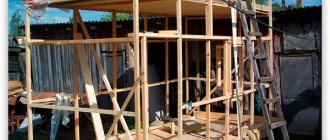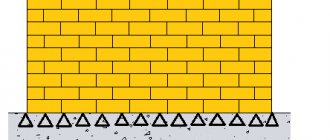In November, Moscow took first place at the regional stage of the World Travel Awards 2021 in the category “Best Tourist Destination for Cultural Heritage in Europe.” Amazing buildings built at the turn of the century before last played an important role in this. They seem fabulous because of their towers and the firebirds and flowers of paradise depicted on the facades. And you can write a separate fairy tale about each of them. The stories of the most famous Moscow tower houses are in the material mos.ru.
Russian tower
Cockerels, windows of various shapes, high reliefs of snakes, sirens and phoenixes on wall panels... It seems that Pertsova’s apartment building in the neo-Russian style on Prechistenskaya embankment is a setting for Russian fairy tales about Ivan Tsarevich, the Serpent Gorynych, Koshchei the Immortal.
“Such buildings are called fabulous by non-specialists, who immediately recall the illustrations of Ivan Bilibin and Viktor Vasnetsov. In fact, the creators of these houses adhered to a different concept. After the abolition of serfdom in 1861, representatives of the people and the creative intelligentsia looked for ways to self-identify, turned to the origins of Russian architecture, especially northern ones, and tried to adapt it to the needs of modern people. This is how the neo-Russian (pseudo-Russian) style appeared: a gable roof made of gable elements with ridges, a brick pattern, panels based on sketches of folk embroidery. Something similar to the chambers of the 16th–17th centuries, when European influence was not yet felt in Rus',” explains local historian and editor-in-chief of the Moscow Heritage magazine Filipp Smirnov.
The main customers of the “fairy-tale” mansions were Russian entrepreneurs, such as, for example, Pyotr Pertsov. He patronized the arts and one day decided to build an apartment building for artists and artists. Ironically, this project became a salvation for another famous philanthropist and theatergoer, Savva Mamontov. In 1900, he was forced to use his property, including the Metropol Theater, to pay debts, and, in order not to go bankrupt, he took up folk crafts in the Abramtsevo workshops. It was at this time that Pertsov was planning his house with the artist Sergei Malyutin and ordered a panel from Abramtsevo.
“Vrubel, Malyutin, and Petrov-Vodkin worked with him (with Savva Mamontov. - Approx. mos.ru). And so tiled paintings on Russian themes began to appear in the city. One of these paintings is a polychrome panel on Pertsova’s house,” says Philip Smirnov. This panel depicts the sun with a human face, under whose rays fantastic flowers rise.
The merchant Nikolai Igumnov, the owner of the Yaroslavl large manufactory, also erected a pseudo-Russian tower for himself according to the design of the city Yaroslavl architect Nikolai Pozdeev: with towers, kokoshniks, scarlet flowers and firebirds on porcelain tiles.
“This mansion on Yakimanka is unusual in that it was built from foreign materials. Brick, for example, was brought from Holland. It was subjected to repeated firing, as a result of which it became like stone,” says Philip Smirnov.
Another example of fairy-tale chambers with pointed and round towers and a fortress wall is the Yaroslavl Station . He also has an unusual story. The building was rebuilt several times in connection with the extension of the Northern Railway, and when a train was launched from Moscow to Arkhangelsk, the architect Fyodor Shekhtel was invited to expand the station.
“The architect had just returned from Glasgow, where his North Russian wooden pavilion was on display at the exhibition. When the exhibition ended, the residents of Glasgow asked not to dismantle the exhibit, but to leave it to them. Shekhtel was so inspired by this success that he decided to remake the Yaroslavl (at that time Northern) station in a pseudo-Russian style,” explains the local historian.
The theme of northern architecture formed the basis of another building. Pyotr Shchukin, a collector of ancient Russian monuments (primarily from the Russian North) wished to place his treasures in a museum. He suggested that the architect Boris Freidenberg, the author of the Sandunov Baths, develop a project that would correspond in form to the exhibits. The architect settled on a red-brick mansion with asymmetrical towers of different heights and a steep porch. Similar architecture was typical for Yaroslavl. In the 90s of the 19th century, the house grew up on Malaya Gruzinskaya Street.
“Since we were talking about Russian antiquities and valuables, Shchukin gave Freidenberg a clear task - to create a chest house. The architect coped with the task,” adds Philip Smirnov. Now the collector’s mansion houses the State Biological Museum named after K.A. Timiryazev .
The historical appearance of the buildings of the new and old museums has been almost completely preserved to this day. For the first time, it is planned to carry out a comprehensive restoration of the estate: in August, the Moscow City Heritage Department approved a project for the necessary work. Specialists will strengthen the foundations and brickwork of the walls, put the roofs in order, restore historical windows and doors, and also recreate their lost elements using archival documents. The premises will also undergo restoration. For example, lost marble slabs with mosaic inserts on the floors, stucco decoration and ornamental painting will be restored.
By the way, according to a local historian, there is a similar story at the Tsvetkovskaya Gallery on Prechistenskaya Embankment . Collector Ivan Tsvetkov has been collecting works by Russian artists for many years and one day he wanted to choose a suitable “box” for the paintings. At the beginning of the 20th century, the embankment was decorated with a red-brick gingerbread house with glazed kokoshnik trims and tiled inserts depicting birds of paradise and flowers - a design by Viktor Vasnetsov.
The artist Viktor Vasnetsov designed a house in the pseudo-Russian style for himself in Troitsky Lane (now Vasnetsov Lane). “He was an ardent supporter of this direction in architecture. I built a house that would inspire him,” says Philip. This wooden mansion-terem combines different architectural elements. One room resembles a boyar's chamber, the other a peasant hut, the third a log church.
Thanks to Viktor Vasnetsov, the Tretyakov Gallery in Lavrushinsky Lane now has a façade in the form of a Russian tower with kokoshnik platbands.
“Here there was a task - to show the collection of paintings to the general public, in particular ordinary people: peasants, commoners, townspeople. And they were closer to the popular style, so the architecture showed an aesthetic that was close to the people,” explains Philip Smirnov.
Empire style, classicism and a lot of constructivism: walking around Khamovniki Creators of the gallery. How the Tretyakov brothers became art fans
Baroque facade with 21 windows near Kaluga
1 / 4
Facade of the Ferzikovo estate in the Kaluga region. 2012 Wikimedia Commons
2 / 4
Ruins of the estate. 2013 © Kalugafoto.net
3 / 4
Facade reconstruction plan. 2015 © Heritage Keepers
4 / 4
Start of work on the reconstruction of the facade. 2021 © Kalugafoto.net
The Ferzikovo estate, rebuilt by collegiate adviser Alexander Chirikov in the third quarter of the 18th century, is located 30 kilometers from Kaluga. Once upon a time, the measured life of an old noble nest took place here (the Chirikovs owned these places from the 16th to the mid-19th century). Its own distillery, conscientious supplies of fodder for the sovereign's stables, a soldier's hospital in 1812, proceedings about cruel treatment of peasants in 1840 and, finally, the transfer of the estate to a dacha partnership with the cynical name "Spis and Stuken" at the end of the 19th century. Then there was a sanatorium here, which closed for renovations in 1988, which was extremely inappropriate for this. Ten years ago, naive observers wrote that “the house was completely destroyed,” although only the interiors were destroyed—the brick decor of the facades was completely preserved.
The nature of the decor and the technique of its execution (the details are made not of plaster, but of hewn brick) are completely similar to the Moscow mansions of the Elizabethan era. But for Moscow, such preservation is very rare, since residential buildings were completely rebuilt after 1812. We can say that any Moscow street would be proud of such a representative baroque palace with 21 windows along the facade.
In 2015, the governor transferred the building to private investor Vladimir Kirnitsky for restoration and placement of a hotel, leisure center and as many as ten museums.
However, the long-awaited “restoration” began not with emergency work, but with the fact that all the brick platbands were cut off from the main facade. Castings were supposed to take their place, but in December 2017, investor Kirnitsky was arrested on charges of other illegal activities. The further fate of the estate is unclear.
Castles and palaces
At the beginning of the twentieth century, Art Nouveau became a popular Moscow architectural style, no longer referring to Russian fairy tales, but to European epics.
“The first mansion in Moscow in the Art Nouveau style is the house of the architect Lev Kekushev in Glazovsky Lane , built in 1901. But it was cramped for the master there. In addition, there were people willing to buy his house. And when Kekushev was offered an amount three times the real value, he agreed to sell it. With this money, he purchased a plot of land on Ostozhenka, built a new mansion and registered it in the name of his wife Anna,” says Philip.
This mansion, or rather a medieval castle with stucco moldings made of climbing plants and a round tower under a pointed roof, became known as the Kekusheva house . The building was crowned with a sculpture of a lion. This is how the master signed his works, playing on the name Leo. The architect's wife settled in the castle instead of the princess. But the fairy tale turned out to have no happy ending: Anna Kekusheva left her husband for his assistant, and the house remained with her.
Another story is connected with a sculpture of a lion that mysteriously disappeared from the roof of a mansion after the revolution. Unfortunately, it was not possible to find the original statue, and almost a century later, restorers returned the three-meter lion to its place. They recreated the sculpture from old archival photographs. The specialists also returned the facades of the house to their historical appearance, and the premises to their original layout. In 2021, Kekusheva’s mansion became the winner of the Moscow Restoration competition.
According to Philip Smirnov, Russian Art Nouveau was often eclectic, incorporating elements of different styles, and sometimes houses were so bizarre that customers refused to buy them. They seemed too incomprehensible and alien. One of the unusual projects was the mansion of Fyodor Shekhtel . In Ermolaevsky Lane, he erected a fairy-tale castle with an observation deck, a dome, a mosaic floor and forged bars.
“It was a kind of demonstration of the architect’s capabilities. He wanted to show future clients that it is possible to build such palaces in our city, in Russia. The architect generally built “talking” buildings. In one of his mansions, he cut a nine-meter window and built a giant fireplace in which a 185-centimeter man could stand at full height,” says the local historian.
New life for old houses: how architectural monuments are being restored in Moscow Commune House, Levenson’s printing house and 13 more masterpieces of the “Moscow Restoration”
Briefly about the main thing
Russian house style is a combination of national architecture traditions and modern construction technologies.
Natural wood or stone is used to construct the building. Most often, softwood logs or timber are used. Its choice allows you to save on external and internal decoration.
There are three styles: Russian country, Russian hut and tower. Choosing something specific determines the theme of the interior design. In the first case, only stylization is formed, in the second, an atmosphere of modest rural life is created, the distinctive feature of the third direction is luxury, a wealth of colors and expensive handmade accessories.
For the construction of new buildings, standard projects are usually used; it is possible to order an individual project or restoration of an old house in the Russian style. During its implementation, scientific research experience is used to help recreate ancient architectural masterpieces of Russian architecture.
Ratings 0
Fortress and pagoda
Some architects wrote not just fairy-tale, but exotic scenes into the history of Moscow streets: they designed houses, the meaning of which remained a mystery to their contemporaries. This is the mansion of the merchant Arseny Morozov on Vozdvizhenka .
“At the beginning of the twentieth century, many entrepreneurs traveled to Portugal, inspired by the local bloodless revolution of 1908-1910. At that time, the Russian public was wondering whether this experience could be applied here,” explains Philip.
Arseny Morozov also went to Portugal in the company of architect Viktor Mazyrin. There, the merchant was inspired by the royal palace of Pena in Sintra, built in the Moorish style with Manueline elements (an architectural style, a variant of the Portuguese Renaissance, named after King Manuel I the Fortunate). The merchant wanted a similar mansion in Moscow, and Mazyrin supported his idea. The result was a white fortress with crenellated towers and arched windows, shell-shaped stucco, a knight's hall and an interior in Arabic and Chinese styles.
Nobody appreciated Arseny's idea, not even his mother. According to legend, she said: “Before, I was the only one who knew that you were a fool, but now all of Moscow will know!” By the way, Morozov did not live long in this fortress: during one of his carousings, he shot himself in the leg as a bet and died of blood poisoning at the age of 35.
The pagoda house on Myasnitskaya (tea store) also caused bewilderment among Muscovites of that era . The Perlov brothers, Sergei and Semyon, traded tea and competed with each other. Having learned that the Chancellor of the Chinese Empire, Li Hongzhang, was going to Moscow, they argued which of them would be able to host the official.
After the death of his father, Semyon Perlov received a house on Mira Avenue (house 5), rebuilt by Roman Klein. And on Myasnitskaya, the facade of the house that Klein had just built was remodeled by the architect Karl Gippius, his assistant. Roman Klein himself refused - he did not want to spoil his creation with the bad taste of the customer. Sergei asked Gippius to remodel the mansion in the Chinese style. As a result, the facade of the building was decorated with a pagoda tower, like in a Buddhist temple, bells and ornaments in the form of hieroglyphs, dragons, and bamboo appeared. But the Chinese fairy tale did not work out: the politician honored Semyon with his presence, but did not even look at Sergei.
Perlov's former tea shop is recognized as a cultural heritage site of federal significance, and in October of this year the object of protection was approved. Experts described all the architectural and decorative elements that shape the appearance of the historical building and its interiors. Experts consider the interior decoration of the house to be especially valuable: a coffered ceiling with gilded ornaments and paintings, lanterns, and carved wooden decor. By the way, furniture and some interior items have been preserved from the time the store opened, for example, display cabinets and two Chinese one and a half meter vases.
Dragons and a pagoda tower: what’s interesting about Perlov’s tea shop
Late Baroque in Stupino
1 / 8
View of the Otrada-Semenovskoye estate. Painting by an unknown artist. Early 19th century State Historical Museum
2 / 8
The main house of the estate from the courtyard. Beginning of the 20th century Russian estates
3 / 8
The main house of the estate from the river side. Beginning of the 20th century Russian estates
4 / 8
Oval white dining room of the estate. Early 20th century Wikimedia Commons
5 / 8
Office of Count A.V. Orlov-Davydov. Beginning of the 20th century Russian estates
6 / 8
Manor Otrada-Semenovskoye. Until 1940 otrada-o.ru
7 / 8
View of the wing. Before 1940 deadokey.livejournal.com
8 / 8
Plan of the first floor of the main manor house. 1975 Russian estates
Otrada-Semenovskoye, Stupinsky district, Moscow region, one of the most famous and saddest abandoned estates, is located only 60 kilometers from the capital. This is a very late Baroque, dating back to the beginning of Catherine’s reign: the design of the platbands is still old-fashioned, and the crowning cornice already has classical detailing. In general, the customer of the construction, Count Vladimir Orlov, one of the brothers of the first favorite of Empress Catherine II, saw the house as a romantic “lordly castle” in the English spirit. The palace was built in 1774–1779 on the banks of the Lopasni River, it is surrounded by a park with a sundial, fountains, greenhouses, gates decorated with sculptures of lions and eagles, a family mausoleum and a temple standing on a hill above Otrada.
The facade of the building is elegant and simple, and the layout is very complex - a strict enfilade of the main volume is combined with risalits Risalit (from Italian risalita - “protrusion”) - part of the building protruding beyond the main line of the facade and running the full height of the building, where oval rooms fit and even a triangular plan. The corner rotundas and staircases surrounding them, completed in the mid-19th century, made the house even more picturesque. Just 10–15 years ago, one could see the interiors of the palace - with rich stoves and the finest paintings of walls and ceilings by Karl Bryullov himself.
1 / 7
The main house of the Otrada-Semenovskoye estate, Stupinsky district, Moscow region. 2014 Wikimedia Commons
2 / 7
The main house of the estate. 2021 © Vadim Razumov
3 / 7
The Orlov family coat of arms on the facade of the main house of the estate. 2016 © Vadim Razumov
4 / 7
Finishing one of the rooms in the main house of the estate. 2002 Russian estates
5 / 7
Interior of the main house of the estate. 2014 © kva_pharm / CC BY-NC-SA 2.0
6 / 7
Interior of the main house of the estate. 2014 © kva_pharm / CC BY-NC-SA 2.0
7 / 7
Interior of the main house of the estate. 2021 © Vadim Razumov
After the revolution, a small museum of noble life operated here, but in 1938, in the trans-river part of the park, a state dacha was built for Lavrenty Beria, and since then the estate has belonged to special departments. The NKVD school, the KGB pioneer camp were located here, and now the palace and its surroundings are located on the land of a closed FSB sanatorium. The estate was faithfully restored in the 1980s, but in 1998 the palace was removed from the federal register and was soon looted (including roofing iron). A search is underway for an investor to restore the monument, since neither the Federal Property Management Agency nor the FSB are ready to take on such troubles. The house stands with a collapsed roof and moldy walls, and minimal work to preserve it is carried out only by rare volunteer cleanup workers.
The tale never ends
Today, most of the “fairytale” buildings house diplomatic buildings or embassies of foreign countries. Thus, in the Tsvetkovskaya gallery and the Pertsova house there are diplomatic buildings of the Ministry of Foreign Affairs of the Russian Federation, in the Shekhtel mansion there is the residence of the Ambassador of Uruguay, in the Igumnov house there is the residence of the Ambassador of the French Republic.
“When diplomatic relations were established with other countries during the Soviet period, our government tried to offer them the best mansions, built relatively recently for those times,” explains Philip Smirnov.
The local historian believes that the interest of Muscovites in these houses is understandable. Many people now do not leave the city limits, walk along the capital’s streets in their free time and take a closer look at the painted facades, which they probably did not notice before. “They are so colorful and magical that they encourage you to do your own research and find out what the tale is about,” he sums up.
House with mezzanine and tower of the Beijing Hotel: restored buildings in 2020
Temples of Glory, Truth and “Eternal Feelings” in the Penza region
1 / 8
View of the village of Nadezhdina from the east. Engraving by Joseph Mossmer. 1830s Wikimedia Commons
2 / 8
Summer house on the Kurakins' estate in Nadezhdino, Saratov province. Painting by Vasily Prichetnikov. Late 18th - early 19th century Tver Regional Art Gallery
3 / 8
Temple of Fidelity in the park of the estate of Prince A. B. Kurakin Nadezhdino. Painting by Vasily Prichetnikov. Late 18th - early 19th century Tver Regional Art Gallery
4 / 8
View of the estate. Painting by an unknown artist Tver Regional Art Gallery
5 / 8
A gallery called the Repository of Eternal Feelings. In the garden of His Excellency Prince Alexander Borisovich Kurakin in his village of Nadezhdino. Painting by Vasily Prichetnikov. Late 18th - early 19th century Tver Regional Art Gallery
6 / 8
Temple of Truth. In the garden of His Excellency Prince Alexander Borisovich Kurakin in his village of Nadezhdino. Painting by Vasily Prichetnikov. Late 18th - early 19th century Tver Regional Art Gallery
7 / 8
Temple of Lada. In the garden of His Excellency Prince Alexander Borisovich Kurakin in his village of Nadezhdino. Painting by Vasily Prichetnikov. Late 18th - early 19th century Tver Regional Art Gallery
8 / 8
View of the Nadezhdino estate. Early 20th century Wikimedia Commons
Catherine's era was a time of pretentious ideas that gave the Russian province many metropolitan-level ensembles. In the Serdobsky district of the Penza region, the famous Nadezhdino estate, created by the “radiant prince” Alexander Borisovich Kurakin (aka “diamond”), is dying. Having fallen into disgrace for his bad Masonic influence on the heir to the throne, Tsarevich Paul, he turned the place of his exile into a kind of suburban imperial court with a whole set of appropriate ceremonies and positions.
The main house, built in 1795, had 80 rooms, the park was decorated with pavilions with radiant names: the Temple of Glory, the Temple of Truth, the Temple of Patience and the Receptacle of Eternal Feelings. The paths in the park bore the names of Unexpected Consolation, Overcome Difficulties, True Understanding, Frequent Repetition, Remembering Past Joys, Immediate Achievement, Faithful Mistresses, Brother Stepan. In the middle of the park lay a black boulder with the words “Memento mori” written in gold. According to the owner’s plan, the park was supposed to be “an extract of the entire universe.”
1 / 5
Ruins of the facade of the Nadezhdino estate, Serdobsky district, Penza region. 2013 © Julya Terlova / CC BY-SA 4.0
2 / 5
Internal facade of the estate. 2013 © Julya Terlova / CC BY-SA 4.0
3 / 5
Side gate. 2013 © Nikolay Shadrin / CC BY-SA 4.0
4 / 5
Ruins of the interior of the estate. 2013 © Nikolay Shadrin / CC BY-SA 4.0
5 / 5
Ruins of the facade. 2013 © Julya Terlova / CC BY-SA 4.0
After the fire of 1922, the palace remained in the status of a romantic ruin. The outbuildings housed a rural house of political education, then a psychoneurological boarding school, now they too are abandoned. In 2014, a decision was made to sell the estate to a private investor, but the huge palace is still on the verge of destruction (the neighboring Zubrilovka, depicted in many paintings by Viktor Borisov-Musatov, is in exactly the same situation).
Stove corner
It was also called the “woman’s corner” because all the kitchen utensils were located there. It was separated by a curtain or even a wooden partition. Men from their family almost never came here. A huge insult to the owners of the house was the arrival of a strange man behind the curtain in the corner of the stove.
Here women washed and dried things, cooked food, treated children and told fortunes. Almost every woman did needlework, and the quietest and most comfortable place for this was the stove corner. Embroidery, sewing, and painting were the most popular types of needlework for girls and women of that time.
Blacksmith's house
The house of the blacksmith Kirilov is striking in its beauty. It seems that he stepped out of the pages of some fairy tale. This amazing structure is located in the village of Kunara, Sverdlovsk region. The fairytale gingerbread house was recognized as the best in Russia in 1999.
The blacksmith Sergei Kirillov created the beautiful structure with his own hands. His work lasted for thirteen long years. Construction was completed in 1967. From the appearance of the house it is clear that Sergei put his soul into it. The metal and wooden elements of the facade are simply amazing. The master's widow now lives in the fairy-tale house. The gates of her estate are open to guests who want to admire the wonderful creation of her husband’s hands.
The risk of developing atherosclerosis and more: how pancakes with sour cream harm your health
A song from Belarus was not allowed to participate in Eurovision 2021: video
Left his family, went to Minsk: how Mireille Mathieu changed the life of Vladimir Gostyukhin
Women's corner (Seda)
This was an important space in a woman’s life, since it was from behind the stove curtain that the girl came out during the viewing party in elegant attire, and also waited for the groom on the wedding day. Here women gave birth to children and fed them away from prying eyes, hiding behind a curtain.
Also, it was in the women's corner of the house of the guy she liked that the girl had to hide the sweeper in order to get married soon. They believed that such a sweeper would help the daughter-in-law quickly become friends with her mother-in-law and become a good housewife in her new home.
The interior of the hut
For peasants, the house consisted of one or two living rooms, in rare cases there were three. The most common design of a hut is a heated room and a canopy. Wealthy Slavs additionally built an upper room. The room, intended for the summer period, was actively used in everyday life. To heat it, they purchased a Dutch oven.
| The inside of the hut was simple; the main part of the room was occupied by the stove. The table took pride of place in the corner, diagonally from the heating device. Icons were placed on it. Benches were installed along the walls, with shelves above them. |
At the back of the house there was a polati - a wooden flooring intended for sleeping and relaxing. The dwelling also had a women's, men's and red corner. In the latter, all significant events in family life were celebrated.
The small space of the house in Rus' (about twenty-five square meters) was so well organized that it could easily accommodate seven people. Because each member of the family knew his place in the house.











